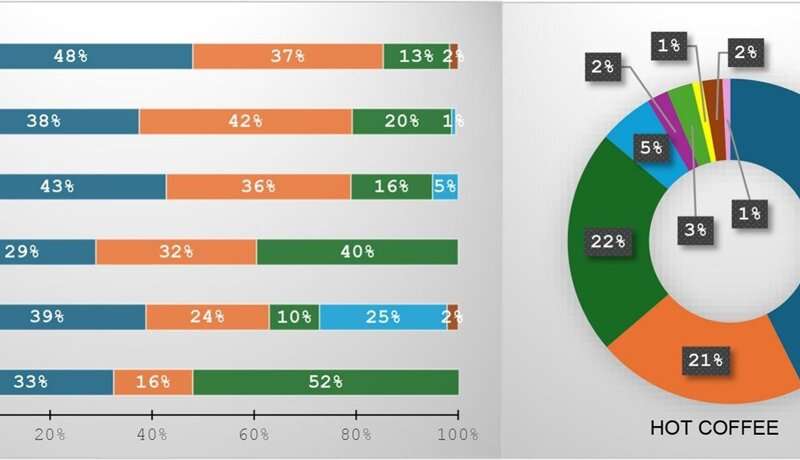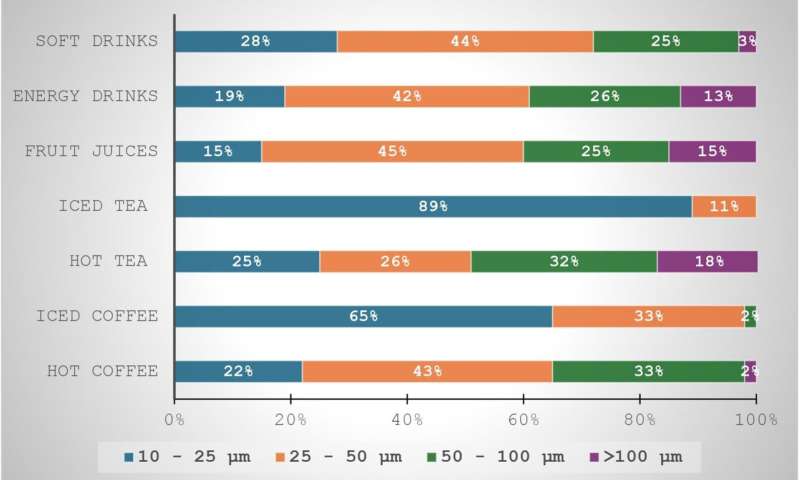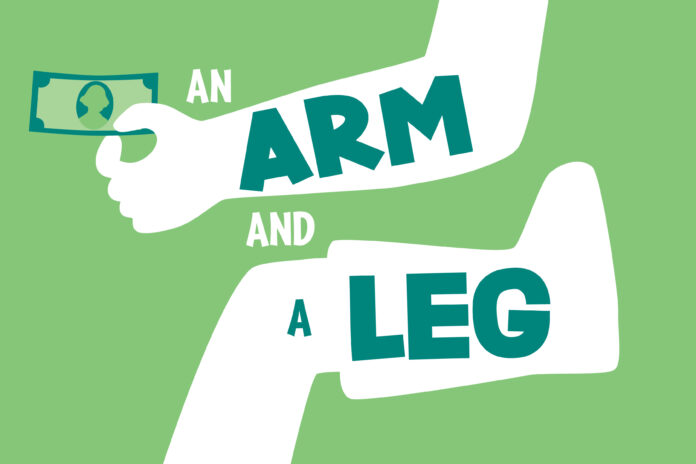Microplastics have found their way deep inside our bones, brains, and even babies. A UK study found that 100% of all 155 hot and cold beverage samples tested contained synthetic plastic particles.
The researchers tested different products from popular UK brands, including coffee, tea, juices, energy drinks, soft drinks, and even tap and bottled water, and not a single beverage was free of microplastics (MPs). Surprisingly, the more expensive tea bag brand showed a higher concentration of MPs, compared to the cheaper ones.
Traces of plastics, including polypropylene, polystyrene, polyethylene terephthalate, and polyethylene—commonly used for food packaging and disposable containers—were found in the fluids. The daily average exposure through beverages was found to be 1.65 MPs/kg body weight per day.
The findings are published in Science of the Total Environment.
MPs are tiny pieces of plastic ranging in size from 1 μm to 5 mm, which are widespread across aquatic, terrestrial, and even airborne environments. They have become a growing health concern for living beings across species due to their ability to accumulate and carry toxic chemicals through the food webs.
Humans come into contact with MPs every day through food, water, consumer goods, and even air.
Traditional wastewater treatment systems fail to remove MPs, and as a result, they keep circulating in water systems. As drinking water is non-negotiable to life, many studies have focused on investigating MP levels in it, with reports ranging from negligible amounts to as high as 1,400 particles per liter in bottled water in the UK.
However, humans also enjoy a variety of other beverages, whether it is tea, coffee, or a soda to go with a meal, and all of these contribute to daily fluid intake. Despite this, little is known about the total MP exposure from overall beverage consumption.
For this study, the researchers designed a study to analyze the levels of MPs in commonly sold hot and cold beverages in the UK market. They collected thirty-one distinct products, and five separate samples of each product were sent to a laboratory to quantify the concentration of synthetic MPs present in them.
-

Average distribution (expressed as percent) of MPs polymer types in the studied beverages. Credit: Science of The Total Environment (2025). DOI: 10.1016/j.scitotenv.2025.180188
-

Average MPs size distribution (expressed as percentage) in the studied beverages. Credit: Science of The Total Environment (2025). DOI: 10.1016/j.scitotenv.2025.180188
MPs were isolated from the beverage via vacuum filtration followed by digestion of organic matter with hydrogen peroxide at 60 °C for 24 hours. Polymer identification and particle characterization were carried out using spectroscopy, while microscopic imaging assessed MP shapes, sizes, and counts.
The results revealed that most particles were fragments (72–93%), ranging from 10 to 157 μm, with polypropylene being the most common polymer type.
Comparing the concentrations of MPs across beverages showed that the higher the temperature of the beverage, the higher the MP contamination. For instance, hot tea had the highest concentration, at an average of 60 MPs per liter, compared to iced tea’s average of 31 MPs per liter and soft drinks’ average of 17 MPs per liter. The increased leaching of MPs from the container or tea bag into the beverage could arise from thermal degradation and diffusion.
Based on an online survey of 201 UK and laboratory findings, the estimated average exposure from all beverages reached 1.7 MPs/kg body weight per day for women and 1.6 MPs/kg for men, values that are significantly higher than those estimated from drinking water alone.
Researchers highlight that this study provides evidence on how different beverages contribute to human microplastic intake and demonstrates that relying solely on drinking water assessments may significantly underestimate actual exposure.
Written for you by our author Sanjukta Mondal, edited by Sadie Harley, and fact-checked and reviewed by Robert Egan—this article is the result of careful human work. We rely on readers like you to keep independent science journalism alive.
If this reporting matters to you,
please consider a donation (especially monthly).
You’ll get an ad-free account as a thank-you.
More information:
Muneera Al-Mansoori et al, Synthetic microplastics in hot and cold beverages from the UK market: Comprehensive assessment of human exposure via total beverage intake, Science of The Total Environment (2025). DOI: 10.1016/j.scitotenv.2025.180188
© 2025 Science X Network
Citation:
UK study finds microplastics in all beverages tested, raising exposure estimates (2025, September 24)
retrieved 24 September 2025
from https://medicalxpress.com/news/2025-09-uk-microplastics-beverages-exposure.html
This document is subject to copyright. Apart from any fair dealing for the purpose of private study or research, no
part may be reproduced without the written permission. The content is provided for information purposes only.


